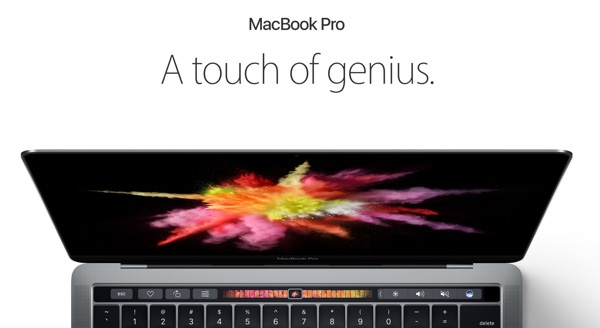What is Apple’s MacBook Pro Touch Bar, how it works, and all the things you can do with it in macOS Sierra, first-party apps, and third-party apps.
Apple’s announcement of all-new MacBook Pros today has obviously got a lot of people talking. Even if you are not in the market for a new notebook computer right now, there is little argument against the new Touch Bar being perhaps the biggest addition to Apple’s notebook lineup for a long time, and it has the ability to change the way a lot of us work on our computers. It is also perhaps the final piece in Apple’s “you don’t want a full touchscreen on a laptop” argument.

We do not think we are being hyperbolic here, either. As Apple’s demonstrations and videos show, the Touch Bar, which is basically a small Retina multi-touch display that sits above the main keyboard, has the potential to change the way we do all kinds of things ranging from writing an email to working on a complex image or video.
Depending on which app you have open at the time, your experience of the Touch Bar on the MacBook Pro will change, and we think that has the potential to be huge. In fact, here are examples of some of the things that can be done with the Touch Bar on the new MacBook Pro range.
- Browsing the web – when in Safar, the Touch Bar will give users quick access to bookmarks or even the back and home buttons. There’s even an area to tap which brings up the URL entry view.
- Accept and reject calls – Whether they are FaceTime or Continuity iPhone calls, being able to tap an accept or reject button just like on iOS now makes the answering of calls feel even more intuitive on the Mac.
- Find Locations – When in Apple Maps, icons will be displayed on the Tough Bar which, when tapped, will search for those kinds of locations.
- Control Music – Audio controls just got even better thanks to Touch Bar. Play, pause, skip track, etc. It’s all there.
- Edit pictures and videos in different photo and video apps.
- Add emojis.
- Access Function keys.
- Ability to customize the Touch Bar.
- Dedicated Siri button to invoke the virtual assistant.
- Quick email shortcuts in Mail app.
- Cycling between apps.
- Predictive keyboard suggestions.
- Available to use in Apple apps like Final Cut Pro X, Mail, Finder, Calendar, Numbers, Preview, Keynote, GarageBand, Messages, Pages, Photos, FaceTime, iMovie, Apple Pay, Safari, Xcode and more.
- Third-party app developers can make use of Apple’s APIs in macOS Sierra to extend the functionality of their apps for the Touch Bar. Apple showed off apps like Adobe Photoshop, Algoriddim djay and some others all getting support for it.
We can’t mention the Touch Bar without mentioning the inclusion of Touch ID, either. Whilst not strictly part of the Touch Bar, it’s located close enough for us to lump it in. Located at the right-most side of the Touch Bar and doubling as power button too, Touch ID on a Mac makes account authentication and quick switching a simple task, and even allows for Apple Pay authentication, too. We’ve been crying out for Touch ID on a Mac since it arrived in the iPhone 5s back in 2013. It’s great that it’s finally here.
Here’s a video from Apple showing some of these above mentioned things that Touch Bar can do in action:
So what do you guys think? Is Touch Bar+Touch ID enough to get you excited for the new MacBook Pro? Sound off in the comments below.
You might also like to check out:
- 2016 MacBook Pro Specs, Price, Release Date Announced, Here Are The Details
- 2016 MacBook Pro: 13-Inch Vs 15, Touch Bar / ID Vs Without Model [Specs Comparison]
- Jailbreak iOS 10 / 10.1 / 10.0.2 / 10.0.3 For iPhone, iPad, iPod touch [Latest Status Update]
You can follow us on Twitter, add us to your circle on Google+ or like our Facebook page to keep yourself updated on all the latest from Microsoft, Google, Apple and the Web.
